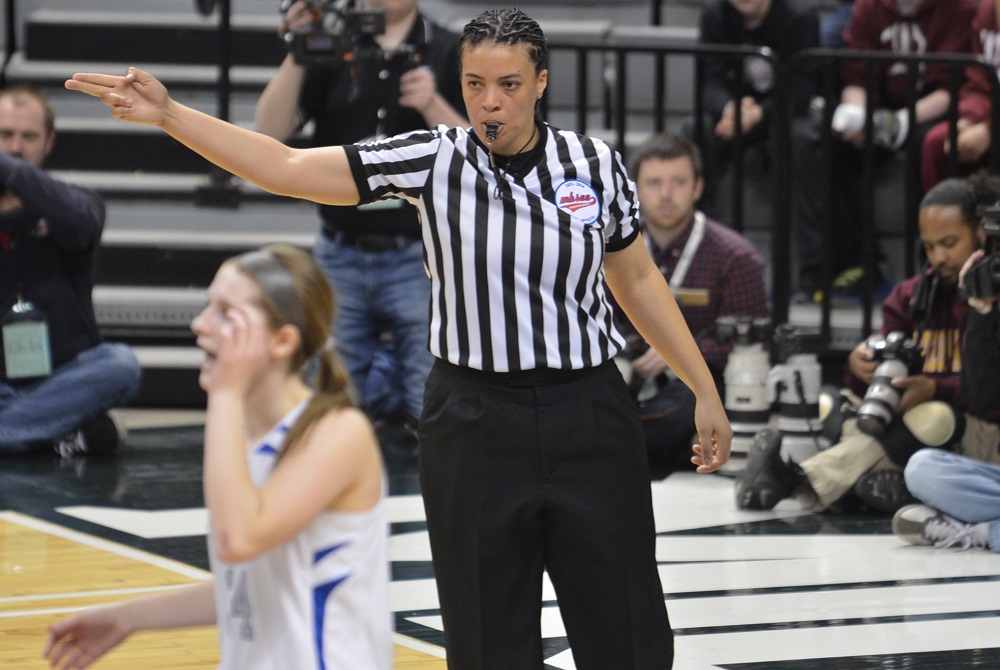
See the Whole Play
August 19, 2014
Here are a few more pearls of wisdom from the nation’s leading gathering of sports officials, these from Barry Mano, NASO president:
- “Incorrect no-calls are easier to explain than incorrect calls.”
- “Officials are to enforce, not appease.”
- “In spite of their criticisms, there is no sensible parent who would want their child to participate without officials.”

Be the Referee: Basketball Timeout
By
Brent Rice
MHSAA Assistant Director
February 10, 2022
Be The Referee is a series of short messages designed to help educate people on the rules of different sports, to help them better understand the art of officiating, and to recruit officials.
Below is this week's segment – Basketball Timeout - Listen
We are on the basketball court today where a wild pass from the point guard is headed out of bounds. A teammate jumps and is just barely able to catch the pass, but his momentum is carrying him out of bounds before he lands. While still airborne, and in possession of the ball, he calls time out.
Should the official grant him the time out – or is he out of bounds, with possession going to the defending team?
Since the player jumped from inbounds, gained possession, and called timeout before touching down out of bounds – the time out should be granted. His acrobatic play and quick thinking saved his team from committing a turnover, and they’ll inbound the basketball after a 60-second break.
Previous editions
Feb. 3: Basketball Video Review - Listen
Jan. 27: Wrestling Inspections - Listen
Dec. 16: Ball Over Backboard - Listen
Dec. 9: Winter Officials Mechanics - Listen
Nov. 26: Instant Replay - Listen
Nov. 11: Tourney Selection - Listen
Nov. 4: Receiver Carried Out of End Zone – Listen
Oct. 28: Volleyball Back-Row Block – Listen
Oct. 21: Soccer Disallowed Goal – Listen
Sept 30: Field Goal Falls Short – Listen
Sept. 23: Volleyball Obstruction – Listen
Sept. 16: Catch or No Catch – Listen
Sept. 9: Intentional Grounding – Listen
Sept. 2: Pass Interference – Listen
Aug. 26: Protocols and Mechanics – Listen

